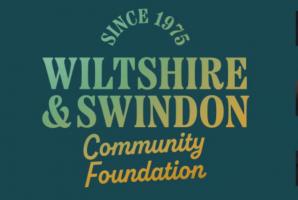November Speaker Meeting: All about Stonehenge
Mon, Nov 3rd 2025 at 6:30 pm - 8:30 pm
Speaker: Barbara Hornsby

Club members please log in for more information.
In the picture: Club President Mike Helyer with the guest speaker, Barbara Hornsby, and standing behind is the meeting's host, Rotarian Philip Matthews.
Stonehenge is one of the most famous landmarks in the United Kingdom and is regarded as a British cultural icon.
Barbara described it as the MECCA of the stone age.
She drew a contrast between the classic picture of stone age man as brutish, wielding a stone club and dragging his wife by the hair and the sophisticated society which was necessary to build Stonehenge. Its thought that the builders stayed at nearby Durrington Walls, a settlement of some 1,000 houses. There is evidence to show that people travelled from all parts of Britain to Durrington to both build the monument and celebrate.
It is widely known that the stones of Stonehenge align for the summer solstice when the sun rises over the heel stone. But the stones also align for the winter solstice and it is likely that this was even more significant to the builders as it heralds the end of winter and the coming of spring.
Barbara said that the large Sarsen Stones weighing from 20 to 30 tons have been traced to West Woods on the edge of the Marlborough Downs, though exactly how they were transported remains a mystery. The smaller bluestones weigh between 2 and 5 tons and have been traced to specific quarries in the Preseli Hills in Pembrokeshire, about 200 miles away! There is some debate as to whether they came overland or by sea via Milford Haven.
Barbara said: "All this points to a highly developed civilisation with excellent communications capable of coordinating the huge effort needed to build this timeless monument and organise the celebrations."
Note
The site and its surroundings were added to UNESCO's list of World Heritage Sites in 1986. Stonehenge is owned by the Crown Estate and managed by English Heritage; the surrounding land is owned by the National Trust. Stonehenge was constructed in several phases beginning about 3100 BC and continuing until about 1600 BC. The famous circle of large sarsen stones were placed between 2600 BC and 2400 BC. The surrounding circular earth bank and ditch, which constitute the earliest phase of the monument, have been dated to about 3100 BC. Radiocarbon dating suggests that the bluestones were given their current positions between 2400 and 2200 BC, although they may have been at the site as early as 3000 BC.
'What We Do' Main Pages:

Corporate Membership enables small, medium and large businesses to join Rotary. Corporate Membership gives a company a unique platform for service, networking and professional and personal growth, rooted within the local community
more
Will you join our 250-Club lottery? We have run it for more than 25 years and in that time it has raised tens of thousands of Pounds for charity
more
We make another donation to the charity which provides emergency shelter and assistance when disasters strike
more
A Partner Club is a Rotary club that supports ShelterBox's work in disaster relief by donating over £2,000 in a Rotary year
more
Rotary’s second major donation, of £208,000, was handed over on 7th July 2021 when local Rotarians visited the Great Western Hospital to view the build progress of the nearly completed radiotherapy unit.
more
Brighter Futures launched their Radiotherapy Appeal in 2015. Today, 7 years later, a ribbon cutting ceremony has taken place at the Great Western Hospital
more
Rotarian Terry Williams' remarkable and unique fund raising effort, living in a ShelterBox emergency tent for a week in the Market Place, Highworth
more




